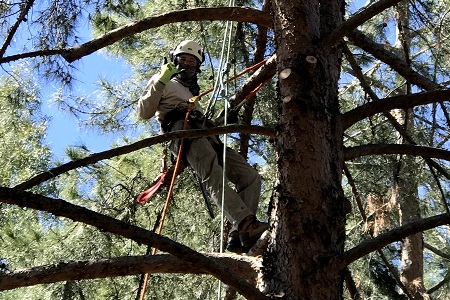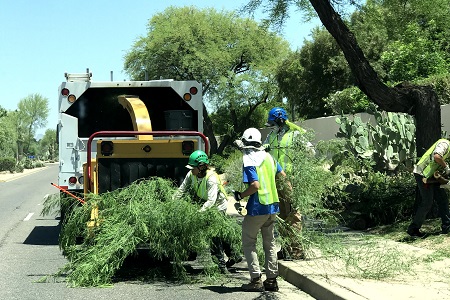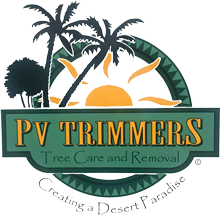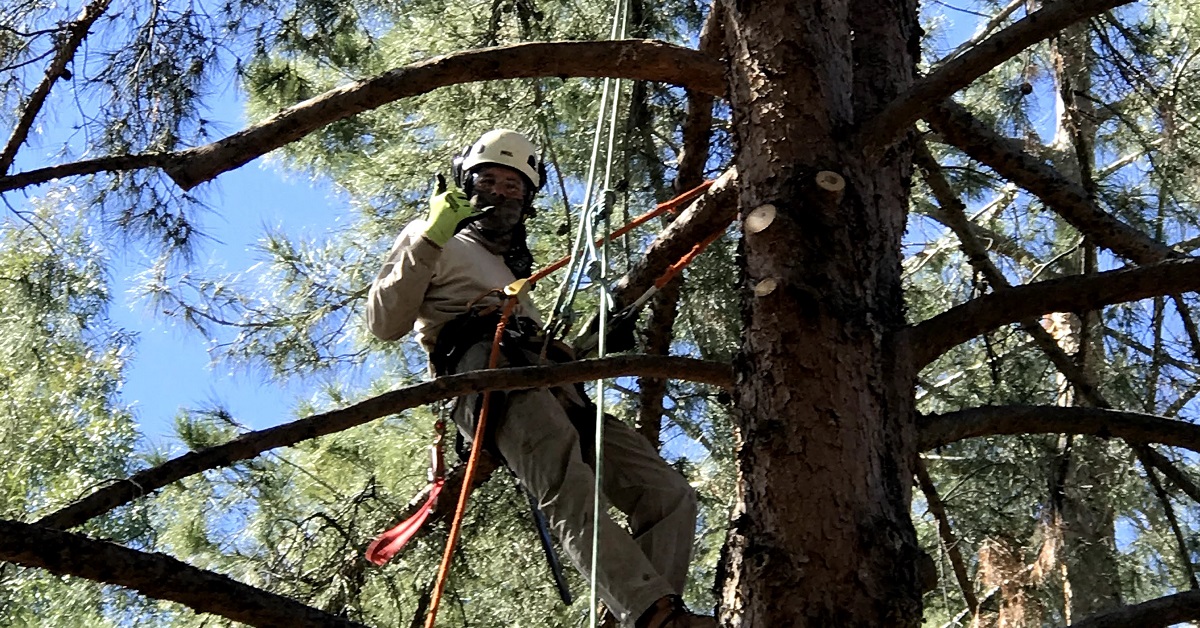Tips for Home Maintenance and Tree Service in Phoenix
As a homeowner, your garden and landscaping could likely be your pride and joy. The ability to make life grow in the desert is a source of satisfaction to many people. Gardening maintenance goes far beyond watering your plants every once in a while. With these tips from PV Trimmers, you can turn your trees and other plants into something marvelous. We’re the local experts for tree service in Phoenix, and we’re happy to pass on our knowledge.
Proper tree care starts before planting
 It is in the best interest for your trees to start planning before they even arrive on your property. Use a soil tester kit to take a reading of the dirt conditions on your property. You should also test your soil as part of your regular tree maintenance program after your tree is in the ground. Here are some of the factors that a soil test kit can check and why they matter.
It is in the best interest for your trees to start planning before they even arrive on your property. Use a soil tester kit to take a reading of the dirt conditions on your property. You should also test your soil as part of your regular tree maintenance program after your tree is in the ground. Here are some of the factors that a soil test kit can check and why they matter.
- pH Factor: This is a measure of how acidic or alkaline the soil happens to be. Your ideal range is from 6.5 to 6.8. If it’s outside of these readings your tree won’t absorb nutrients as well as it ought to.
- NPK: The three main soil nutrients are nitrogen, phosphorus, and potassium. Knowing what levels of these nutrients you have in the ground ahead of time allows you to adjust them before your tree arrives.
- Other Nutrients: Some tests also check the levels of calcium, magnesium and other minerals. Again, if certain nutrients are out of balance, adjust them before your tree arrives.
Planting procedure
When it comes time to plant your trees, make sure that you take them out of the bag. Tree branches are supposed to grow outward, but some trees go so long without being planted that their roots start to spiral in the soil. If this happens the roots will not go down deep enough for out wide enough to stabilize the tree. Inspect the tree before planting to make sure that it’s suitable.
Plant your tree in wet soil and fill in any gaps that you find with dirt. This prevents air bubbles, which can eventually collapse and tilt your tree at an odd angle. Once you know that you’ve got everything right, then go ahead and cover the roots.
Tree trimming and pruning
Tree trimming is the art of strategically cutting off sections of a tree. As a tree grows older and larger, it gains more mass. This mass needs water and nutrients. Excess size places a strain on usable resources and it can also lead a tree to become malnourished. If you cut off less productive branches, such as those that are hidden beneath the shade of a higher level of leaves, you allow the plant to feed itself in a more efficient manner.
Lopping off branches also helps your tree to avoid becoming too unbalanced. Branches don’t grow evenly in all directions, but rather are dependent on sunlight, nutrients, and other factors. This can lead your tree to collapse, possibly damaging your home or vehicle. Balancing the weight of a tree through strategic pruning allows it to stay upright longer.
Safety concerns during tree maintenance
 While it’s a routine part of your landscaping regimen, tree pruning can be a hazardous activity. Make sure that you show the proper level of respect for safety by wearing the following gear:
While it’s a routine part of your landscaping regimen, tree pruning can be a hazardous activity. Make sure that you show the proper level of respect for safety by wearing the following gear:
- Eye Protection: OSHA-approved glasses or bottles keep flying particulates from entering your eye. This is important for long-term health and to prevent accidents caused by visual impairment.
- Gloves: Splinters and cuts are a regular hazard when it comes to working with trees. Gloves provide an extra layer between you and the tree.
- Chaps: If you’re working with a chainsaw, a pair of safety chaps can prevent deep cuts to your leg. They’re filled with silky filaments that gum up the blades so that they can’t spin anymore.
- Hard Hat: A safety helmet keeps falling debris from injuring your head.
- Steel-Toed Boots These boots are lined with metal in two areas. Wearing them can mean the difference between a foot that’s banged up and one that’s crushed.
Note that you need to take great care when lopping off branches. If you’re not trained to use a chainsaw, don’t use one. Also, not every chainsaw is suited for pruning. Some are designed for lifting over your head and cutting off branches. It takes special training to really be qualified to handle these saws. This is especially true if you’re using a chainsaw while on the ladder. To start with, it’s better to use an extended pole saw.
Getting help for your tree maintenance
Sometimes you can’t do it all. It’s understandable. If you need to call in extra help to get the job done, then the team here at PV Trimmers is the best choice for the job. What makes us different? We have many years of experience working on all of the trees that homeowners grow in this area. Our skilled technicians know the optimal cuts to make to ensure that your trees are getting the right nutrients and are balanced for stability.
All you have to do to get the ball rolling is to give us a phone call or fill out the contact form on this site. We can meet with you for a free consultation and estimate. Our team is available for work at your convenience. We treat your property with the same respect and care that you show to it. Your satisfaction and the beauty of your garden is our top priority. Don’t let just anyone take care of your tree trimming. Turn to PV Trimmers, the team that’s got the right amount of training and the professional dedication to give you the best results possible.

